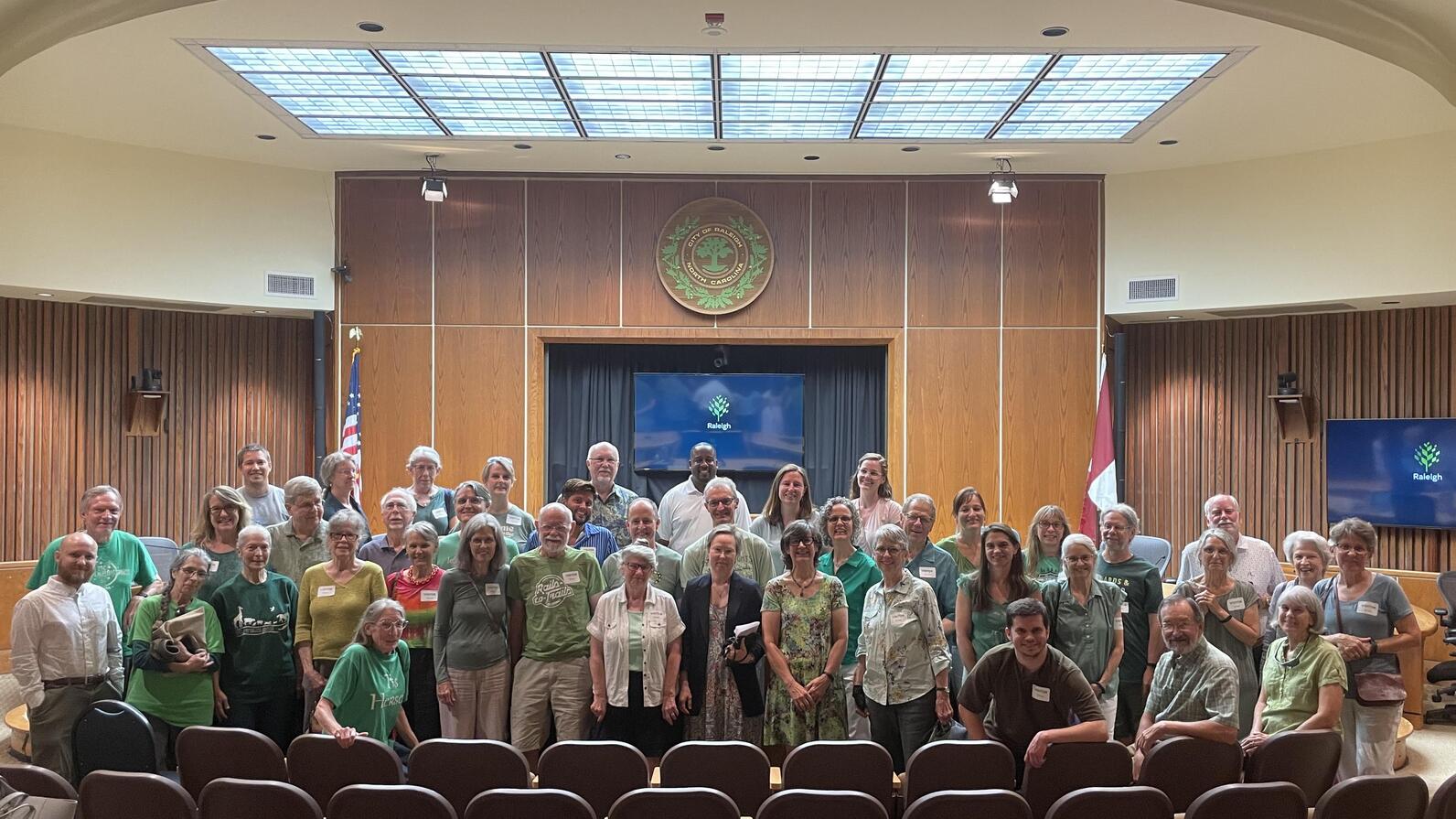With its vast array of tall pines, maples, and oaks, Raleigh is known for its trees, as evidenced by its long-standing moniker: the City of Oaks. But as the city has grown, its tree canopy has rapidly dwindled.
That’s why the Oak Folks—a group of Wake Audubon members, conservationists, and community leaders—got together this year, to ensure that as the city develops, it keeps the health of our planet and communities in mind.
“We’ve noticed a lot of trees disappearing across Raleigh,” said Kate Dixon, the group organizer and chairperson of the Raleigh Sustainability, Wildlife, and Urban Tree Committee. “The city is growing, and we need to make planting and protecting trees a priority for shade, water and birds. A green city is a healthy city for everyone.”
The data back this up. Wake County lost 11,112 acres of tree canopy over the last decade, a land area double the size of William B. Umstead State Park, according to a county assessment.
Most of these losses are due to development, driven by population growth and all of the apartments and homes needed to accommodate the influx of people.
Tree Canopy Loss is a State-wide Trend
Raleigh isn’t unique; this trend is taking place across the state. One state report found that North Carolina is losing urban tree canopy at a rate of 4,500 acres per year to development. That’s the equivalent of 3,000 football fields annually.
The good news is that communities can grow while also maintaining and even increasing tree canopy, for the benefit of birds and people. Raleigh has made some progress, incorporating urban forestry into the city’s latest strategic plan and planting 700 street trees since 2023 as part of its Street Tree Equity Project.
But there is much more to be done to keep pace with development. That’s why the Oak Folks came together this summer, to urge Raleigh’s City Council to adopt policies that would take these actions to the next level.
Local Advocacy Works
After advocates attended a meeting of the City Council’s Growth and Natural Resources Committee in June, the committee resolved to ask the entire City Council to direct staff to propose ways to strengthen the ordinances that developers must follow when constructing new buildings and to ask the city’s Sustainability, Wildlife, and Urban Trees Committee to develop an urban tree master plan. The City Council voted unanimously to support these two requests in July.

The urban tree master plan is to focus on non-regulatory ways to protect trees on city-owned land and right-of-way, as well as ways to encourage residents to conserve and plant trees on their own land.
Dixon said that the Sustainability Wildlife and Urban Trees Committee will be adding eight community members to help write the plan, and she encourages Wake Audubon members who are interested to look for the application which will be released soon. The goal is to complete the plan by January 2026.
Wake Audubon members will also have opportunities to weigh in as the city considers changes to the development ordinances.
Wake Audubon plans to continue organizing around this issue as well, according to chapter board member Mary Abrams. “Healthy urban forests are an extremely important resource for birds and people; joining forces with the Oak Folks was an easy decision,” she said. “We’re excited to start mobilizing community members from Raleigh and beyond.”
New Urban Forestry Program
Audubon North Carolina is supporting this work through our new urban forestry program, partnering with chapters and communities across the state to protect, manage, and grow urban and suburban trees and forests.
"The most common emails and calls we receive are from people concerned about the clear-cutting of forest for development in their communities," said Hannah Pursley, Forest Program Manager at Audubon North Carolina. "We want to equip people with the tools to lead their own campaigns to help grow and protect their local urban forests."
The state has stepped up as well. Earlier this year, Governor Roy Cooper signed a sweeping conservation executive order that included a commitment to plant 1 million new trees in urban areas by 2040.
Benefits for Birds and People
These initiatives are vital for birds. Species like the Wood Thrush, Brown-headed Nuthatch, and Pine Warbler depend on urban forests as a place to rest and refuel during migration and breed during the spring and summer. Without these pockets of trees within and around our built-environments, birds wouldn’t have the resources they need to thrive in our fast-developing communities.
Urban forests and trees also provide enormous benefits for people by removing harmful pollutants from the air, absorbing planet-warming carbon dioxide, and intercepting flood water during extreme weather events. Trees also help keep our cities and towns cool by providing shade and releasing moisture into the atmosphere.
There will be more opportunities to get involved locally, with demonstration plantings led by the Oak Folk and Wake Audubon, as well as further advocacy opportunities at the city council.
For now, if you’re a Raleigh resident, write to the city council to thank them for supporting the tree conservation plan, and urge them to continue working to protect our urban trees and forests.
Learn more about Audubon’s Urban Forestry program, how you can connect with your local chapter, and advocate for our state’s urban forests here.








